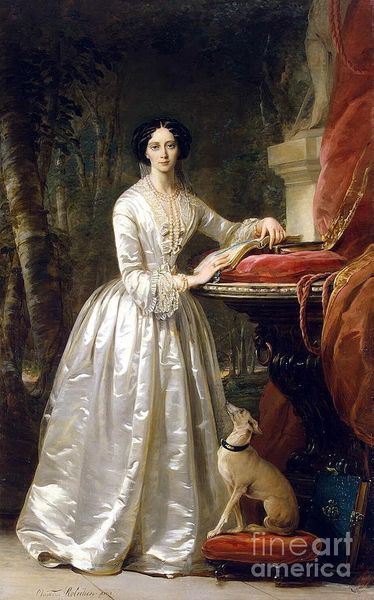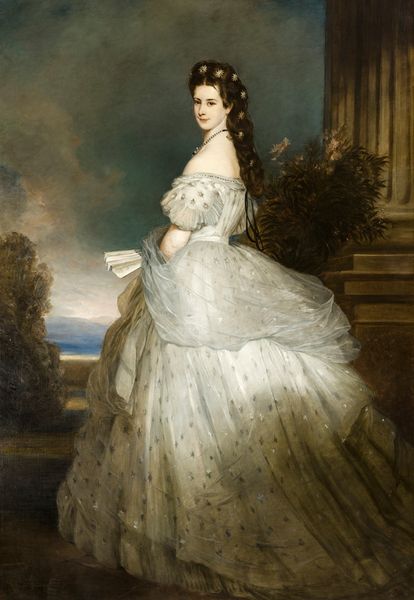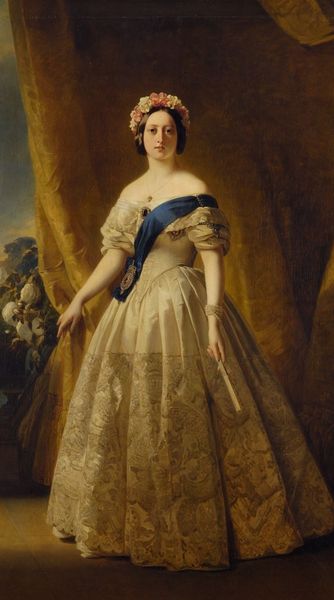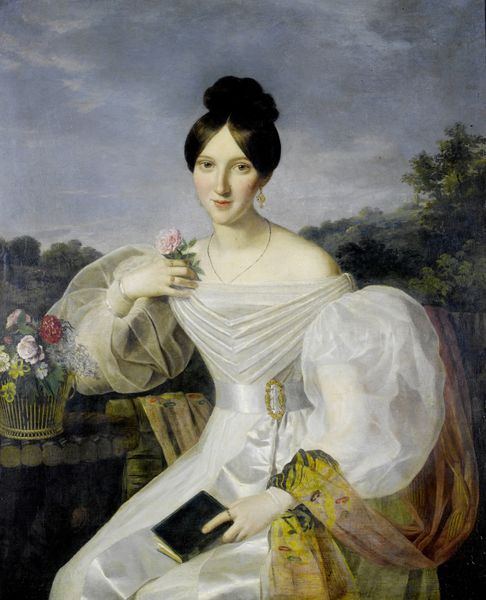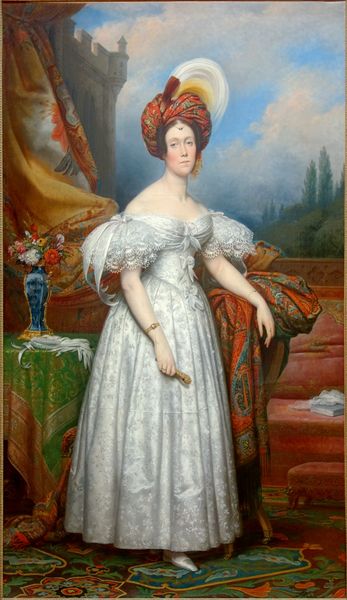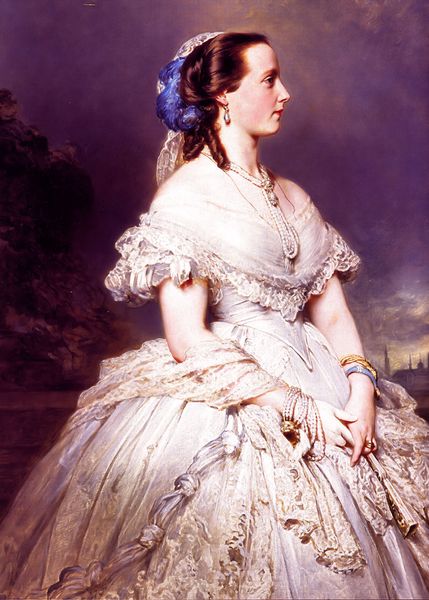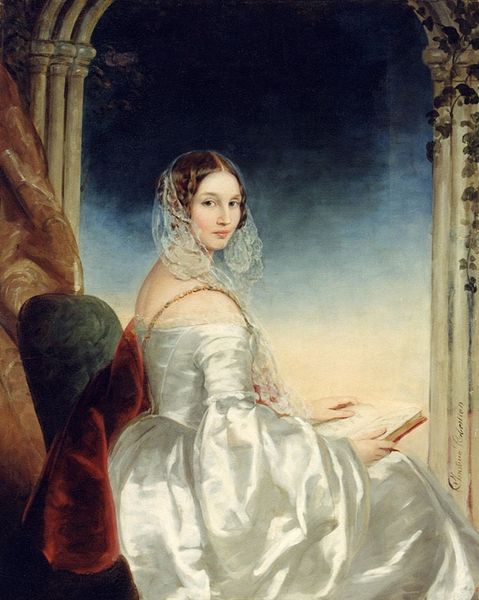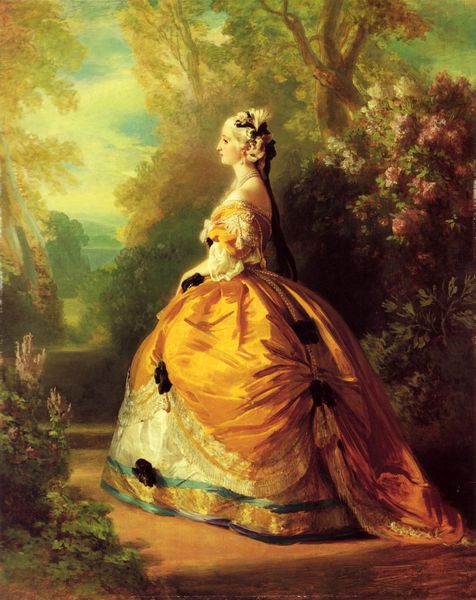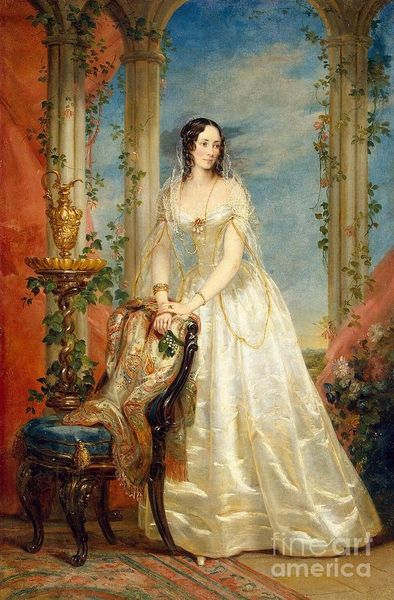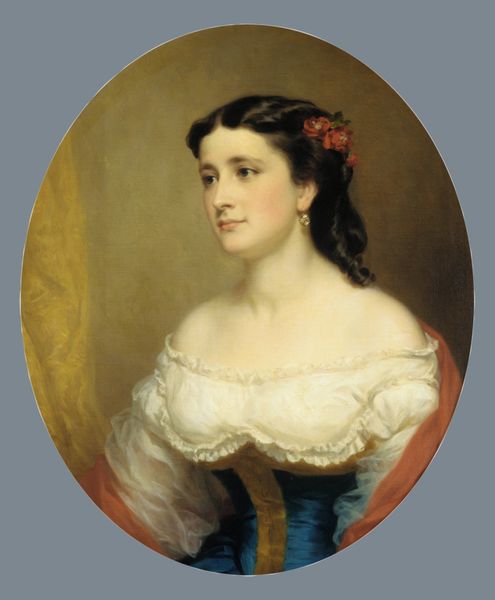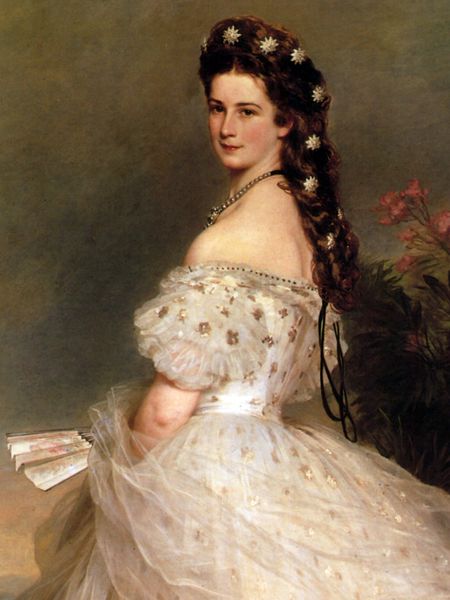
Grand Duchess of Russia, Alexandra Nikolaievna, daughter of Nikolai I
0:00
0:00
oil-paint
#
portrait
#
oil-paint
#
figuration
#
oil painting
#
romanticism
#
history-painting
#
academic-art
Copyright: Public domain
Curator: What strikes me most is the shimmering surface quality in this portrait of Grand Duchess Alexandra Nikolaievna. Editor: Indeed, the texture is remarkable. There’s a visual sumptuousness achieved through what appears to be a delicate handling of oil paint. I see this material presence inflected with social and historical meaning, the excess and expense made visible through layers of labor and commodity exchange. Curator: Certainly. The artist, Christina Robertson, portrays the Grand Duchess against the backdrop of a classical arch, hinting at both tradition and the social constraints placed upon women of her rank. Editor: Look at how the sheen on that pink fabric nearly vibrates. It’s a celebration of wealth manifested in the skillful application of a single material – oil paint to canvas. But also the origin of the fabric as the material base and product of human labour, we need to examine. The social implications can hardly be overlooked, can they? Curator: Precisely. The composition directs our attention not just to the finery of her dress, but to Alexandra’s self-presentation, negotiating identity within those very limitations of courtly expectation, a double bind for many aristocratic women then. There's also this attempt to read herself against nature as presented behind her in an almost idyllic image which adds a certain nuance to her characterisation in terms of what options are given or removed. Editor: It’s an impressive control of the medium—Robertson really demonstrates proficiency through this glossy gown. To have produced fabric with such tactile opulence would’ve taken an extraordinary labour. Do you think there’s a subtle critique implied, a knowing commentary through this meticulous presentation? Curator: A potent question. This representation may very well carry within it both admiration for and a critique of social structures that demanded such performative displays of wealth. Ultimately it depends on the subjectivity, background, and beliefs of each member involved from production all the way until display: author, artist, and subject. The book laying slightly open to her side invites a view of her not as just a political being but someone also able to develop an intellect; while in tension to the submissive way the painter represents her. The question of how it functions in this Hermitage Museum today also remains in consideration, if we approach the picture in this way. Editor: Thank you. I will not see this work of romanticism as something 'self-evident' anymore, this piece now holds a multiplicity and complexity for me I previously would have missed. Curator: Glad to be of service. It has made for a more intriguing analysis for myself as well!
Comments
No comments
Be the first to comment and join the conversation on the ultimate creative platform.
